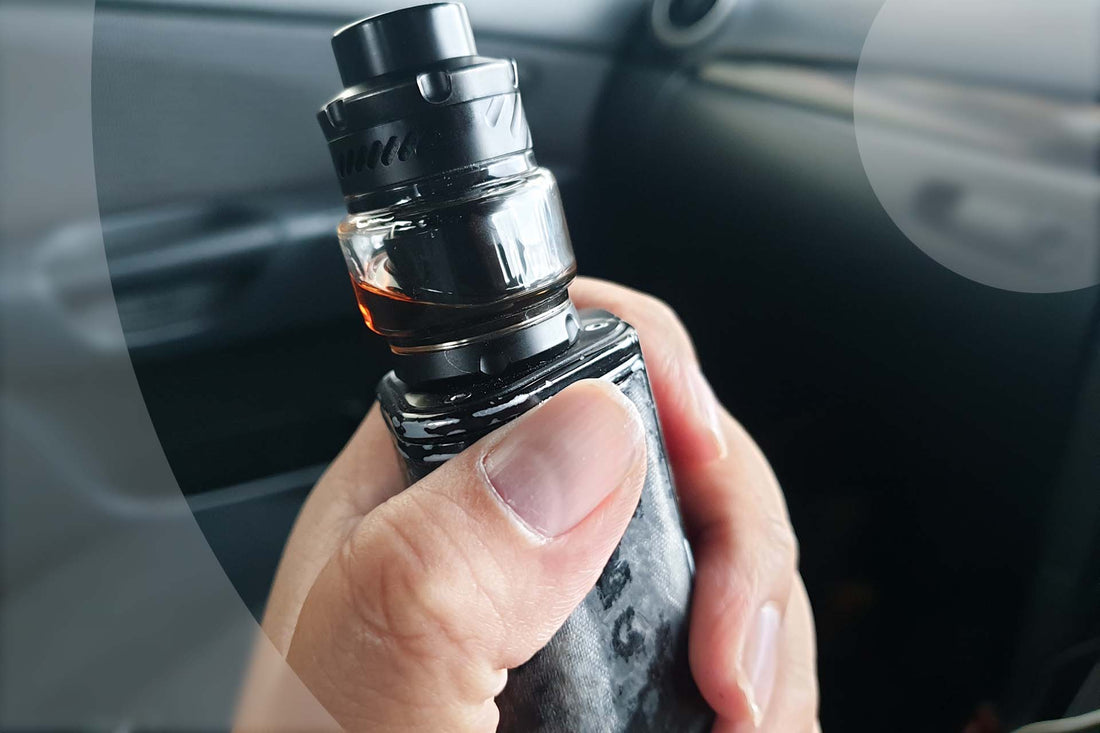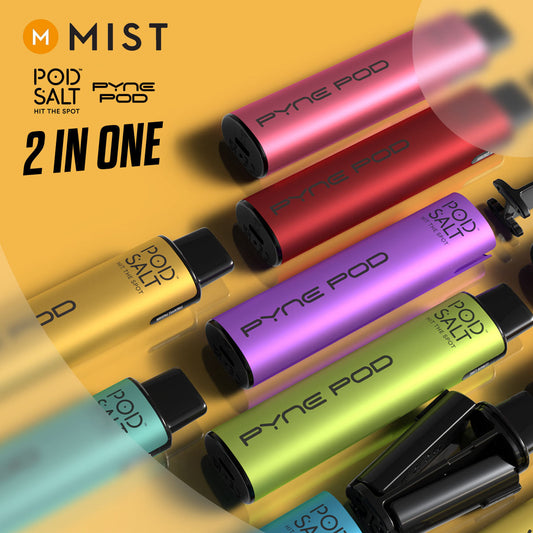More and more people are turning to vaping as an alternative to traditional smoking, but how much do you actually know about the E-liquid or "vape juice" that powers your vape? Whether you’re an experienced vaper or just starting your smoke-free journey, understanding the ingredients in your E-liquid is key to making informed choices.
This guide dives deep into the core components of vape juice, explains its purpose, and sheds light on the regulations that ensure its safety for users in the UK. Let's take a look at what’s inside a vape and why each ingredient plays a vital role in your vaping experience.
What Is Vape Juice?
Vape juice (or E-liquid) is the liquid used in E-cigarettes and vape devices, where it gets heated and converted into vapour for inhalation. The key purpose of E-liquid is to provide a satisfying sensory experience through flavour and nicotine delivery, often serving as a less harmful substitute for smoking.
Vape juice typically contains four primary ingredients:
- Propylene Glycol (PG)
- Vegetable Glycerine (VG)
- Nicotine (optional)
- Flavourings
Now, let's explore these components in detail.

Core Components of Vape Juice
1. Propylene Glycol (PG)
What is it?
Propylene Glycol (PG) is a clear, slightly sweet, and thin liquid that acts as one of the two primary bases in E-liquid. It’s commonly found in the food, pharmaceutical, and beauty industries, used in products like liquid sweeteners, whipped cream, and face creams.
Role in Vape Juice:
PG has a crucial role in providing a "throat hit," which mimics the sensation of smoking traditional cigarettes. This is particularly appealing for smokers transitioning to vaping. Additionally, PG is excellent at carrying flavour, so E-liquids with higher PG content often have more pronounced taste profiles but produce less vapour.
Tip: If you prefer a sharper throat hit and stronger flavours, opt for vape juices with a higher PG ratio.
2. Vegetable Glycerine (VG)
What is it?
Vegetable Glycerine (VG) is a thick, odourless liquid with a slight sweetness. It’s another commonly used ingredient across industries, found in items like frozen yoghurt, toothpaste, and skincare.
Role in Vape Juice:
VG is the ingredient responsible for creating dense clouds of vapour, which is why E-liquids with high VG content are popular among vapers who enjoy big, satisfying "clouds." It also gives vape juice a thicker consistency, making it ideal for use with advanced sub-ohm vape kits.
Tip: For smoother inhales and larger vapour production, choose high-VG E-liquids. Just ensure your vape device can handle these thicker liquids.
3. Nicotine
What is it?
Nicotine is a naturally occurring stimulant found in tobacco plants. It’s the ingredient that helps satisfy cravings for ex-smokers transitioning to vaping.
Forms of Nicotine:
There are two main types of nicotine used in vape juice:
- Freebase Nicotine: Provides the well-known throat hit, but can feel harsh at higher strengths.
- Nicotine Salts (Nic Salts): Offer a smoother inhale even with higher nicotine concentrations, making them ideal for those seeking fast craving relief.
Nicotine Strengths in the UK:
UK regulations cap the maximum nicotine strength in vape juice at 20mg/ml to ensure consumer safety. Many E-liquids are available in varying strengths, including nicotine-free options, to suit individual preferences.
Tip: If you’re new to vaping, start with a medium nicotine strength and adjust based on your needs.
4. Flavourings
What is it?
Flavourings are food-grade additives that give vape juice its delicious range of tastes. From traditional tobacco and menthol to dessert-inspired and fruity flavours, there’s something for everyone.
Role in Vape Juice:
Flavourings typically make up 5-30% of the vape juice recipe. They are carefully balanced with PG and VG to create enjoyable and not overpowering blends.
Tip: Experiment with different flavours to keep your vaping experience exciting. Many vapers find their go-to "all-day vape" by trying out flavour combinations.

Regulations and Safety Standards in the UK
The UK vape industry is rigorously regulated to ensure consumer safety and product quality. These regulations protect vapers from harmful substances and ensure clear labelling and responsible marketing. Here’s what you need to know:
1. TRPR Compliance
The Tobacco and Related Products Regulations (TRPR) lay out strict rules for E-cigarettes and E-liquids:
- Nicotine strength must not exceed 20mg/ml.
- E-liquid bottles cannot exceed a capacity of 10ml.
- Vape tanks must hold no more than 2ml of E-liquid.
2. Packaging and Labelling Standards
All E-liquids must display:
- Clear nicotine warnings.
- Ingredient lists.
- Usage instructions.
This transparency helps users make informed decisions about what they’re consuming.
3. Prohibited Ingredients
Harmful additives like diacetyl and vitamin E acetate are banned in the UK. This ensures that vape juice remains safe for long-term use.
4. Age Restrictions
Sales of E-cigarettes and E-liquids are prohibited to anyone under 18 in the UK. Age verification is enforced for online sales to prevent minors from accessing these products.
Why Knowing Your Vape Ingredients Matters
When you understand the ingredients in your vape juice, you can fine-tune your vaping experience to suit your preferences and needs. It also allows you to be more aware of the quality of what you’re inhaling, ensuring it aligns with your lifestyle and health goals.
The UK’s stringent regulations further bolster confidence in the safety of locally manufactured vape products, making it easier for consumers to trust the quality of what they’re vaping.
How to Make an Informed Choice
If you’re ready to explore the world of vape juice, keep these factors in mind:
- Look for reputable brands with transparent ingredient lists and TPD compliance.
- Choose nicotine levels and flavour profiles that match both your taste and vaping goals.
- Start with a balanced 50/50 PG/VG ratio if you’re unsure of what works best for you.
By understanding the components of E-liquid and how regulations safeguard its production, you’re better equipped to make choices that enhance your vaping experience.



